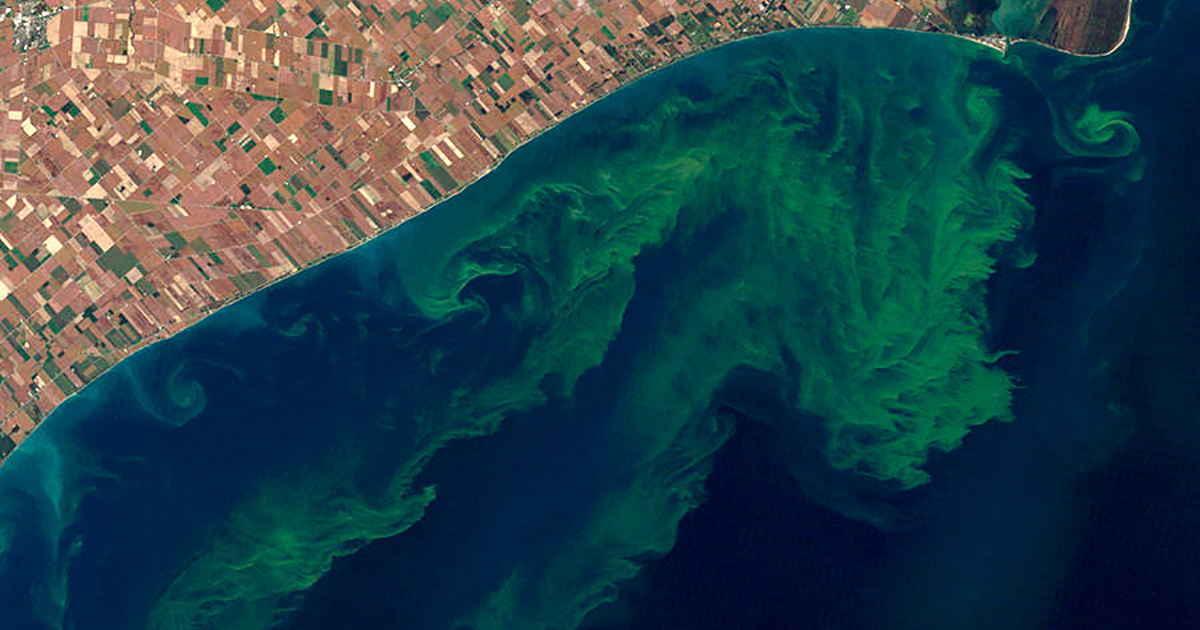
This Fourth of July, You’ll See 70% More Algae Outbreaks Than Last Year

Algae blooms in Lake Erie. NASA
By Anne Schechinger
Over the Fourth of July holiday, many of us love to beat the heat in a favorite lake, pond or river. But this year, vacationers from coast to coast will have to look out for a potentially record-breaking number of algae blooms.
So far this year there have been news stories about 107 algae outbreaks, compared to just 63 this time last year. That’s a 70 percent increase. EWG’s interactive map tracks news reports of blue-green algae blooms across the country since 2010, and this year is on track to have the most so far.
Recreating in or near water stricken by an algae bloom can lead to serious health consequences. Short-term exposure — whether through skin contact or ingestion — to the toxins sometimes produced by algae outbreaks has been linked to sore throat, nausea, vomiting, diarrhea and liver damage.
These outbreaks don’t just affect peoples’ health, they also hurt their wallets. Algae keeps people away from businesses near affected lakes, such as marinas and restaurants.
Lake Hopatcong, in New Jersey, is currently suffering the biggest bloom ever recorded in the state. Hopatcong Mayor Mike Francis says it could have devastating impacts on the health of residents and his town’s economy.
In many cases, algae outbreaks are preventable. Reducing the amount of chemicals that run off farm fields can greatly reduce the number and severity of blooms in agricultural areas.
Lake Macbride, in Iowa, is an example of a lake surrounded by farmland that has algae bloom and E. coli problems. Mandated agricultural conservation practices could go a long way toward cleaning up water bodies like Lake Macbride.
If you plan a lake outing this holiday, it’s vital to know what to look for to figure out whether a toxic blue-green algae bloom is present in the water. Before your next trip to a lake, check out our new video to find out.

 233k
233k  41k
41k  Subscribe
Subscribe 